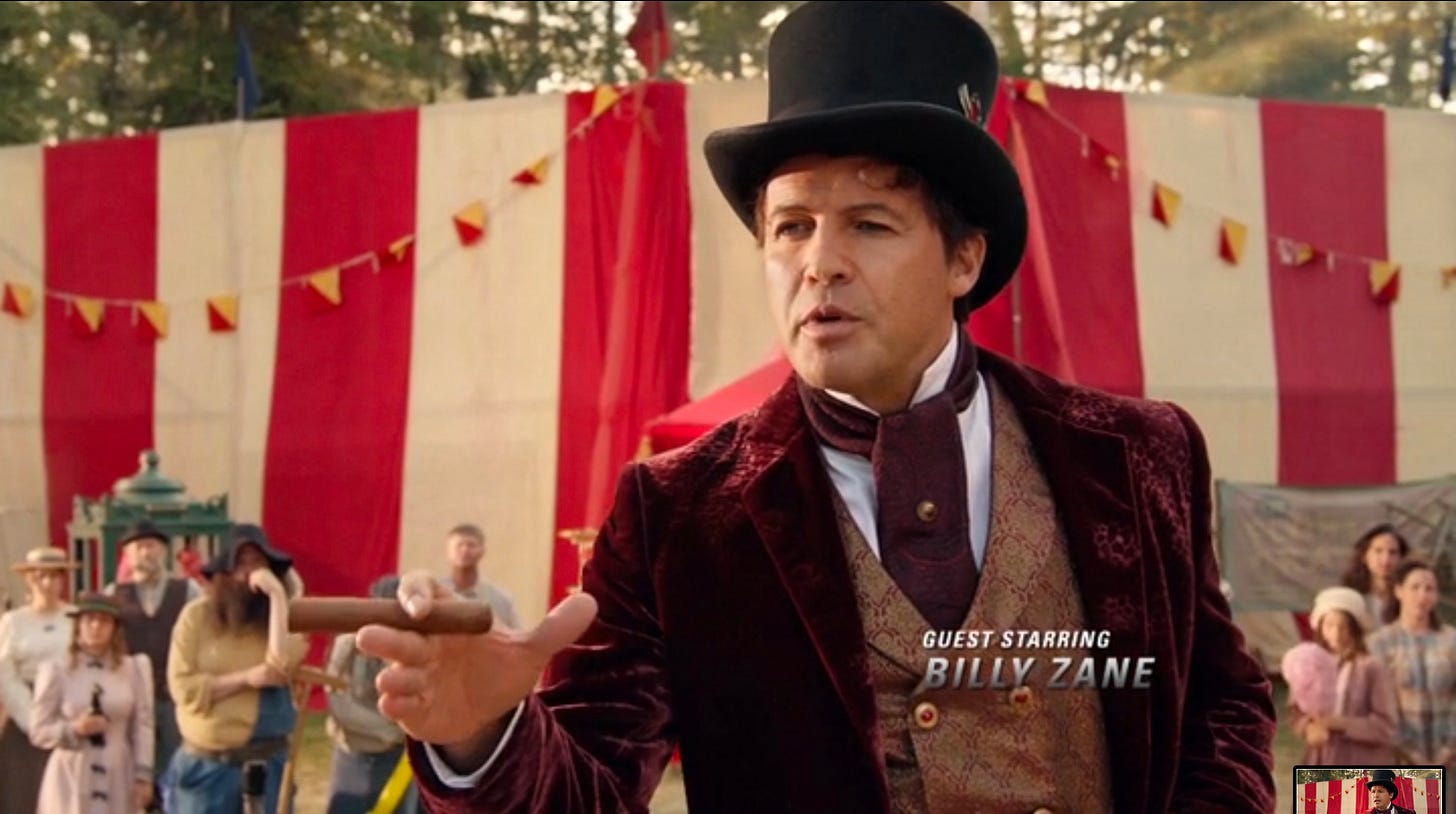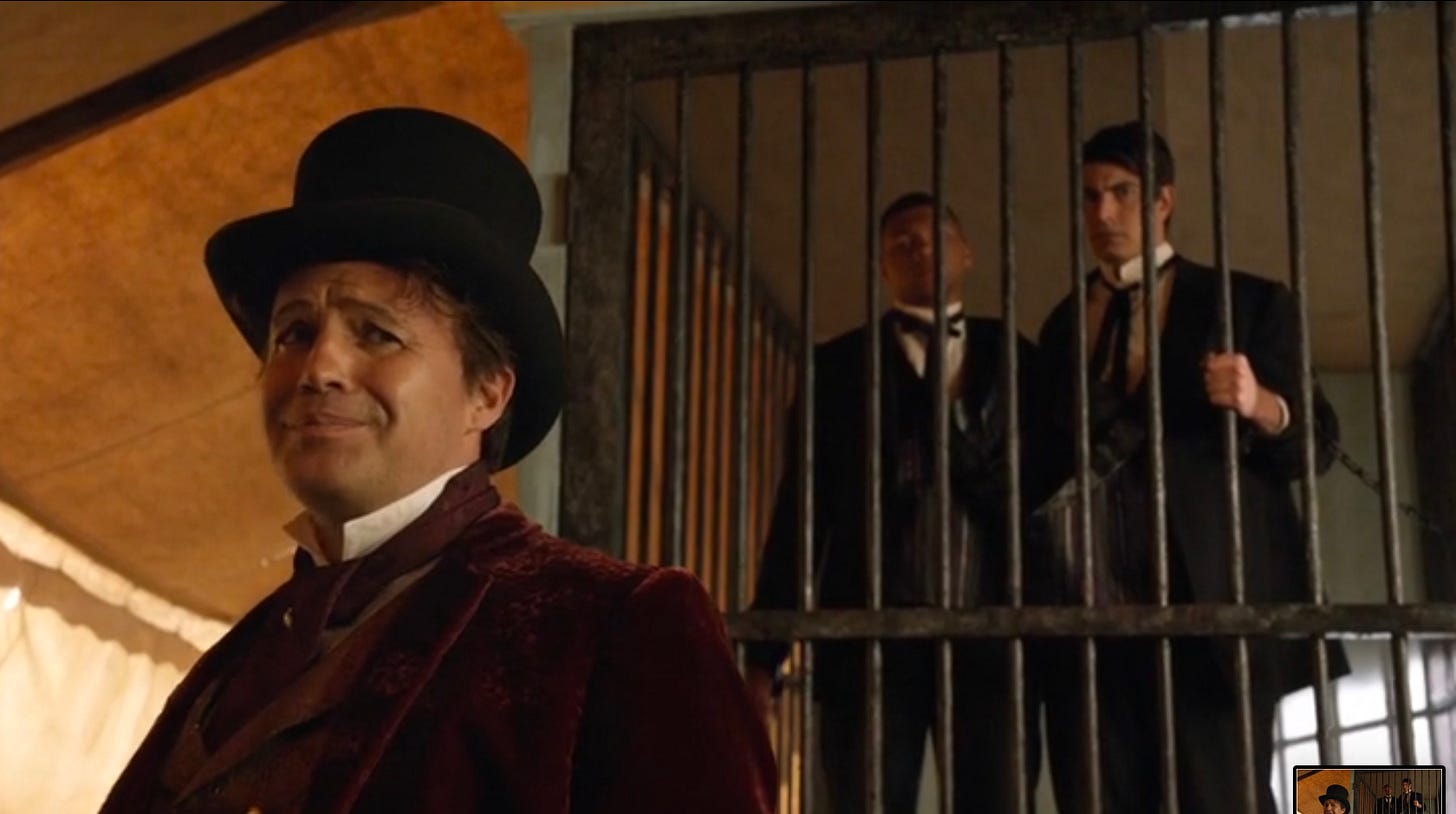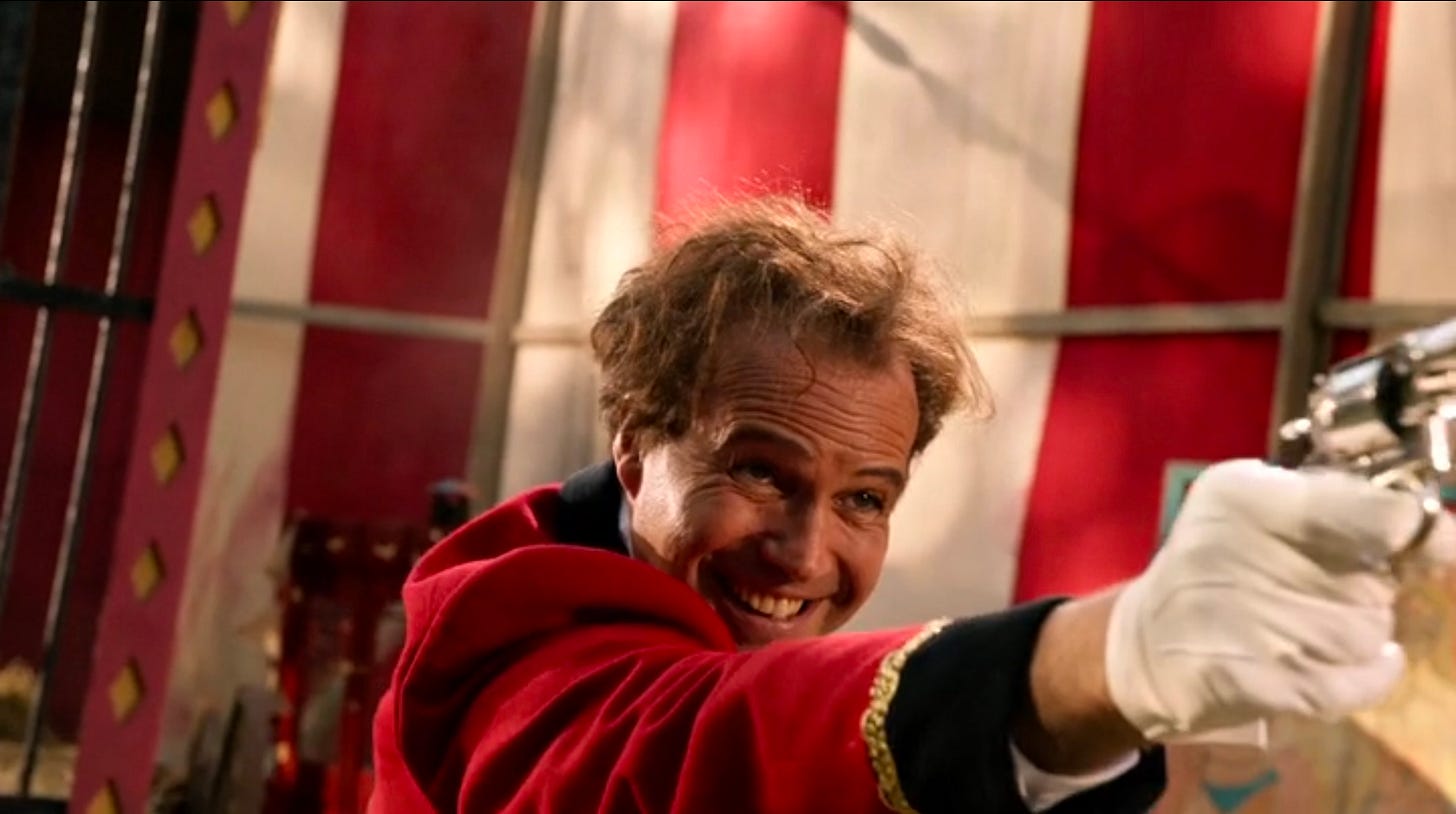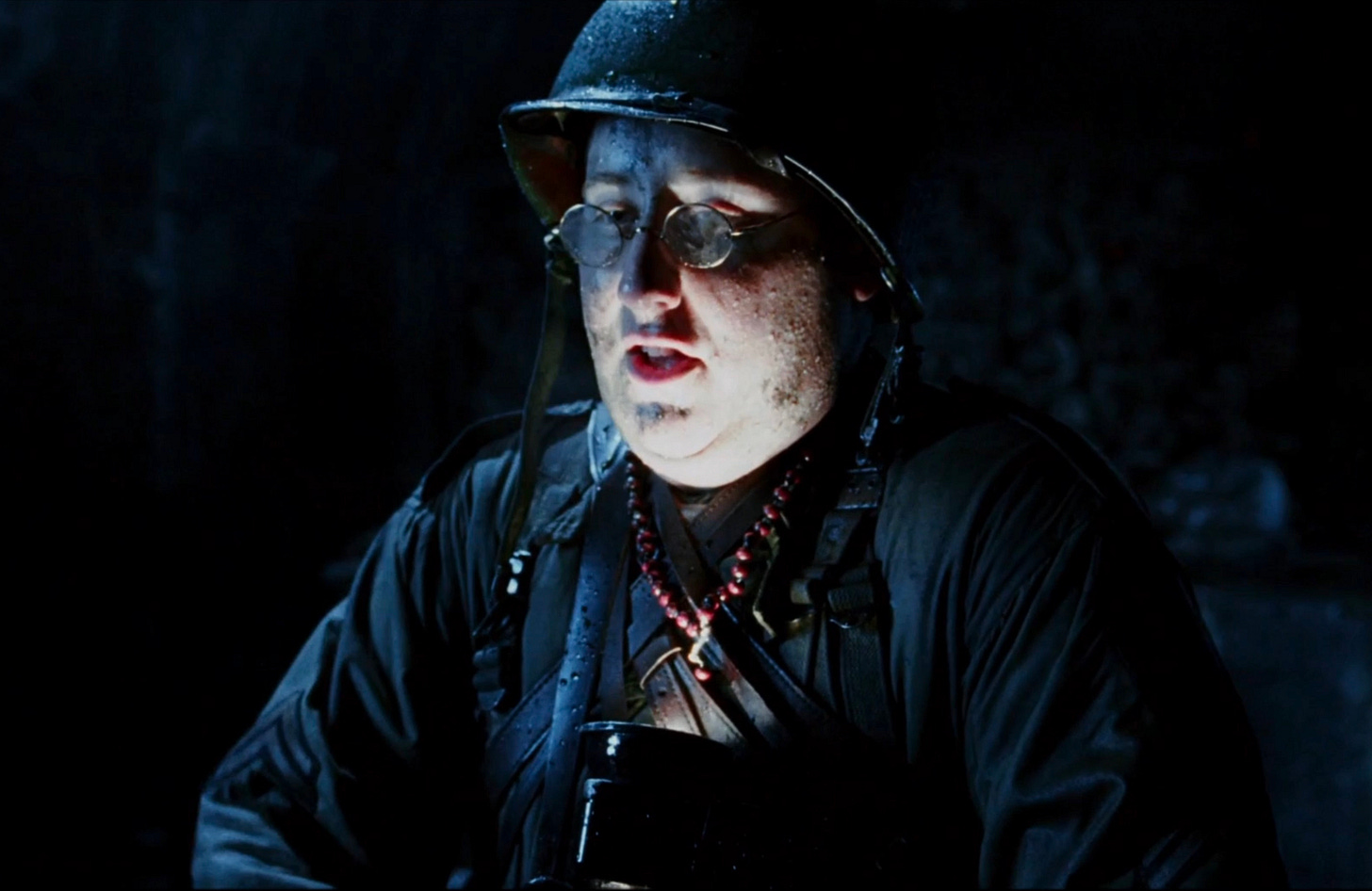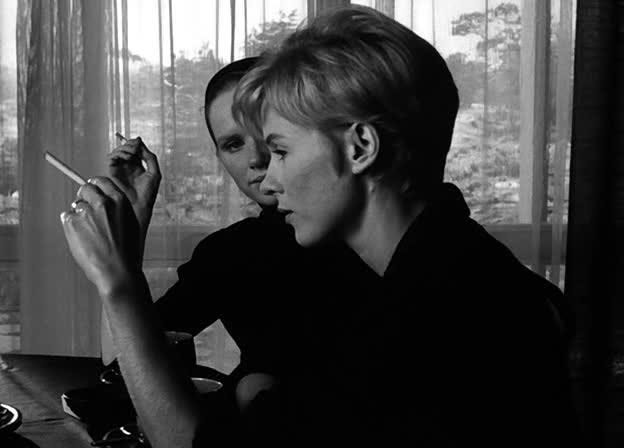Week 58 saw posts on The More the Merrier (1943), Little Shop of Horrors (1986), Legends of Tomorrow (2016-2022), Hellboy (2004) and a series of profile shots from Portrait of a Lady on Fire (2019), Persona (1966) and La Point Courte (1955).
The More the Merrier
The More the Merrier (1943) spruces up what *could* be a boring phone call with framing, sets, and extras. Look how Constance is 'boxed in', but we also get a look out at a crowded dining hall and an attempting-to-eavesdrop waiter.


Meanwhile on the other end of the line, Charles J. Pendergast tries to talk, a packed suitcase nearby, and interfering (for the better! we stan!) Benjamin Dingle eavesdropping in the background.
A scene of two people talking on the phone doesn't have to involve just them; the more (actors, background action, props, set decor) the merrier!
(bonus: what incredibly fun names they all have)
Little Shop of Horrors
At first glance this shot from Little Shop of Horrors (1986) looks like a 'live change' - a theater technique right at home in this stage-influenced film adaptation.
The Greek Chorus of Ronette, Crystal, and Chiffon, all dressed in casual clothes, talk back to a nosey man and then leave frame: the shot holds, camera slowly drawing back as Old Woman walks and sings for 30 seconds, until Ronette appears in the righthand side in glamorous dress and makeup.
Between the birds flying and the Old Woman appearing in the alley as Chiffon crosses, it's clear there's no cut, and CGI-ing isn't this film's style.
Even if Ronette was wearing the dress under her baggy clothes, 30 seconds for a quick-change, adding earrings and necklace and gloves, running (silently) around a moving camera and getting in position, is impressive . . . But on second look, you can see they actually 'cheated' this with a body double; Ronette is carefully barely-seen in the first shot, the focus is all on Crystal, with Chiffon 'leading' the camera to the alley.
By using a stand-in, the 'real' Ronette (Michelle Weeks) can be ready and waiting 'stage' left / camera right in her glamorous makeup.
The cut at 0:48 immediately beings Crystal and Chiffon back in, giving us the *impression* of a theater-esque quick-change, without having to actually execute even one, let alone three, which for film could be quite tricky and really increase the number of takes and thus time and money it takes.
If you can find another, easier, cheaper, faster way to cheat, why not!
Legends of Tomorrow
Legends of Tomorrow 3.02 "Freakshow" guest stars a *delightful* Billy Zane as P.T. Barnum. His facial expressions (and wardrobe, and cigar!) carry his larger-than-life portrayal from the start
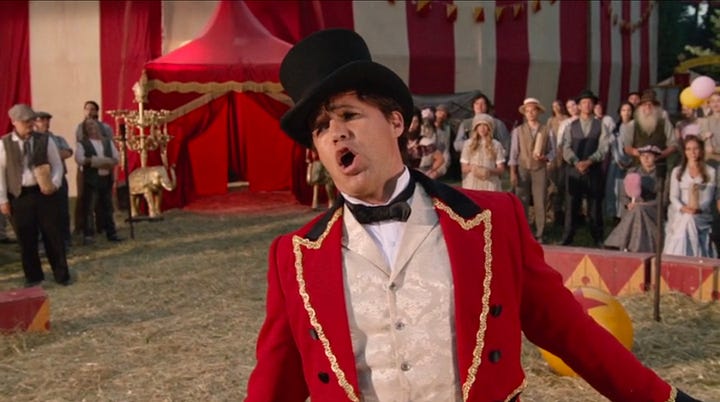
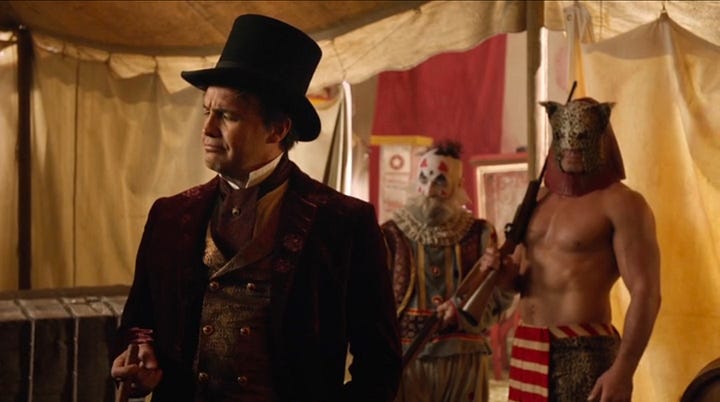
But when Barnum tries to first exhibit as sideshows, then shoot, the Legends, the camera angles start tiling to show him losing his grip (pics 4-6).
Shooting those angles with lots of vertical lines both thin (cage bars) and thick (circus tent stripes) in the background help emphasize the tilt, and thus how much Barnum is going mad.
Hellboy
The opening of Hellboy drops us right into a skirmish with Nazis. As the fight ends, these next shots do three key things:
transition into the next, more expository scene
set up supernatural / hell elements
establish villain Rasputin AND his downfall
Let's get into how they do it in under a minute.
1. When a soldier asks Broom "Something came through . . . from where?" Broom doesn't answer; instead there's a hard cut (0:17) to a stone carving of demons stoking hellfires. It's an implicit answer, but also serves to get the two characters away to have a more private conversation.
2. The wide shot in this scene keeps the hell carving in the background as Broom talks about a "dark place." Like the scene before, the lighting is a saturated blue wash but with pops of red; small fires, Broom's bloody leg, a first aid kit. When the soldier cradles his flashlight/torch, it shines on his face in a delightfully grotesque way.
3. All the talk and imagery of hell culminates in a medium focusing on Broom declaring the name of the villain: Grigori Yefimovich Rasputin. But we also see the rosary which will defeat him. The closeup on Broom bandaging his wound keep his rosary central to the shot, and you can also clearly see it in the wide, specifically lit to stand out against the darkness.
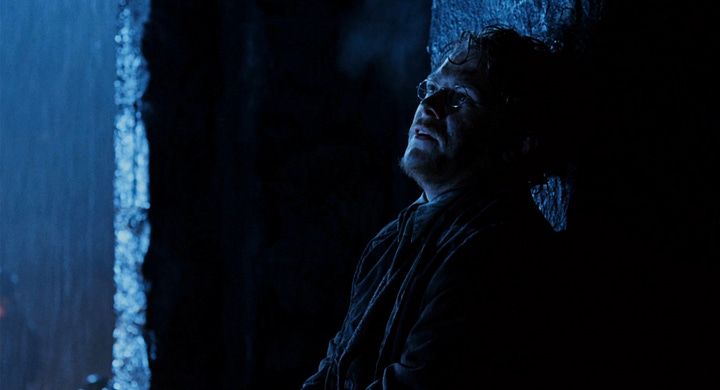
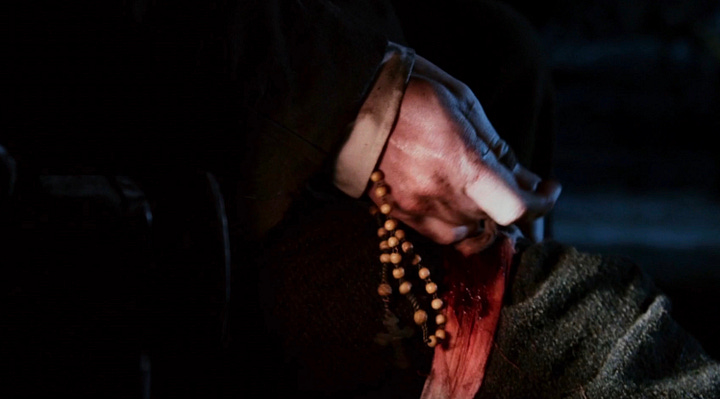
Profile Shots
Cinema constantly references itself.
Portrait of a Lady on Fire (2019)'s profile shot is reminiscent of iconic Persona (1966) shots, which in turn was likely influenced by another French filmmaker in Varda's La Point Courte (1955), with dozens more in between. So it goes . . .




